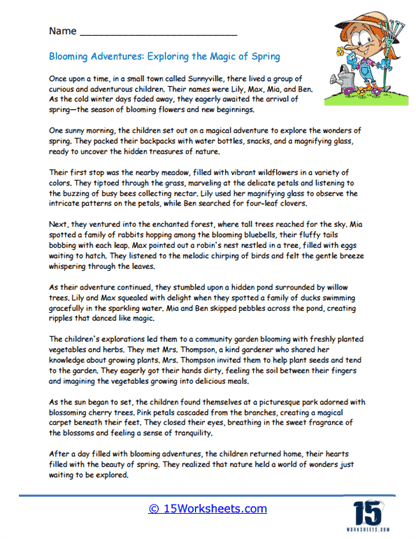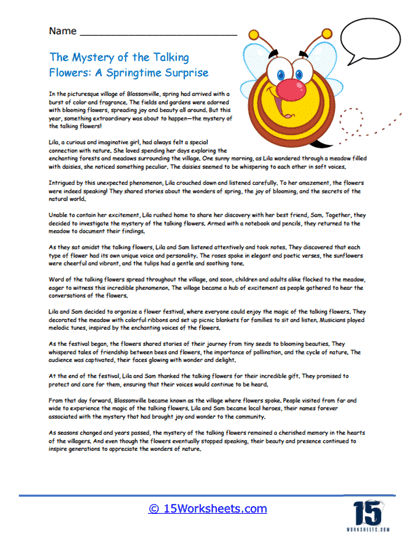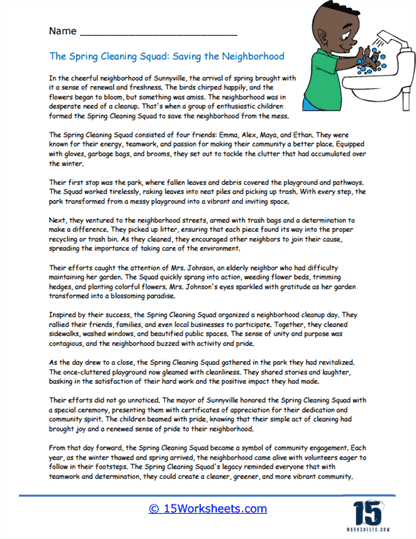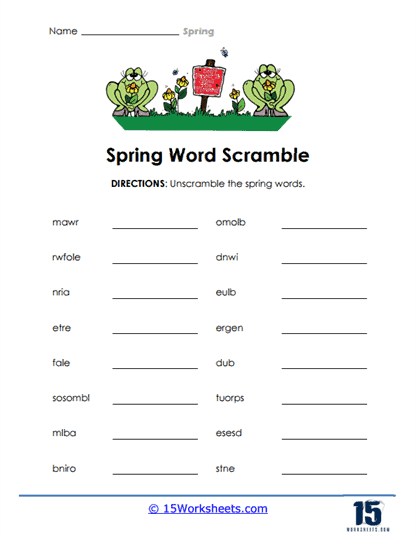Spring Worksheets
What is Spring?
Spring is one of the four seasons, following winter and preceding summer. The specific dates of the start and end of spring can vary depending on the cultural context and the particular climate. However, astronomically, spring is generally considered to begin on the spring equinox (around March 20 or 21 in the Northern Hemisphere and around September 22 or 23 in the Southern Hemisphere) and ends on the summer solstice (around June 21 in the Northern Hemisphere and around December 21 in the Southern Hemisphere).
During spring, the days start to get longer with more sunlight as the Earth’s axis is tilted towards the Sun. This leads to warmer temperatures and the melting of ice and snow. This season is often associated with rebirth, renewal, and growth. Many plants start to grow and flower during spring, and many animals come out of hibernation or begin migrating back to warmer regions.
In the field of meteorology, spring is often defined as the whole months of March, April, and May in the Northern Hemisphere and September, October, and November in the Southern Hemisphere.
Spring is often associated with certain holidays and festivals, such as Easter and May Day, and agricultural practices like planting. It’s also a common subject in literature, music, and art, often symbolizing themes of growth, renewal, and new beginnings.
Spring Season Trivia
- The first day of spring is called the vernal equinox. The term vernal is Latin for “spring” and equinox is Latin for “equal night.”
- The earliest known use of the term “spring cleaning” was in 1857.
- On the vernal equinox, a nearly 5,000-year-old tradition in Iran called “Nowruz” is celebrated as the beginning of the New Year.
- Spring fever is not just a saying; experts say the body’s makeup changes due to different diets, hormone production, and temperature.
- Tornadoes are most common in the spring and least common in winter.
- Children grow faster in the springtime, according to studies.
- In Greece, spring marks the resurrection of Dionysus, the god of wine.
- The first spring flowers are typically lilacs, irises, lilies, tulips, daffodils, and dandelions.
- In spring, the Earth’s axis is tilted toward the sun, increasing the number of daylight hours and bringing warmer weather.
- The Aurora Borealis, or “Northern Lights,” are typically more active in March due to the increase in solar activity as the Earth’s magnetic field aligns with the sun.
- Spring tides, when the sun and moon’s gravitational forces align and cause higher tides, occur during the spring equinox.
- Eostre, an ancient German goddess who symbolized fertility and rebirth, was often depicted with rabbits, giving rise to the Easter bunny.
- The U.S. spring allergy season can begin as early as February and last until early summer.
- The saying “April showers bring May flowers” dates back to a 1610 poem, which actually reads, “Sweet April showers do spring May flowers.”
- According to tradition, wearing green on St. Patrick’s Day in the spring is supposed to make you invisible to leprechauns.
- Benjamin Franklin first proposed Daylight Saving Time in 1784, but it wasn’t established in the United States until World War I. Many countries move clocks forward one hour in spring and back in autumn to save daylight.
- In 2000, the Japanese marked the start of spring by flying kites.
- Egg balancing is a common activity on the day of the spring equinox. It’s said that due to the earth’s balanced gravitational pull during equinox, eggs can be balanced on their end.
- Baby birds learn to sing during spring. They’re born with the ability to sing but must learn the specific songs of their species.


















